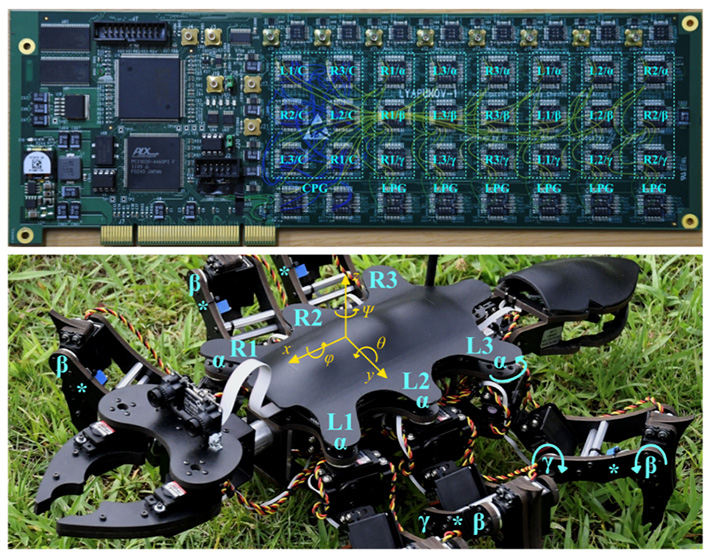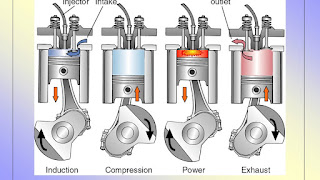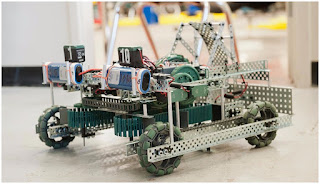SIX LEGGED ROBOT GETS CLOSER TO NATURE
A study led by researchers at Tokyo Institute of Technology (Tokyo Tech) has uncovered new ways of driving multi-legged robots by means of a two-level controller. The proposed controller uses a network of so-called non-linear oscillators that enables the generation of diverse gaits and postures, which are specified by only a few high-level parameters. The study inspires new research into how multi-legged robots can be controlled, including in the future using brain-computer interfaces.
 What we do know is that even the simplest brains contain pattern-generator circuits (CPGs)1, which are wired up specifically for generating walking patterns. Attempts to replicate such circuits artificially have so far had limited success, due poor flexibility.
What we do know is that even the simplest brains contain pattern-generator circuits (CPGs)1, which are wired up specifically for generating walking patterns. Attempts to replicate such circuits artificially have so far had limited success, due poor flexibility.
In the natural world, many species can walk over slopes and irregular surfaces, reaching places inaccessible even to the most advanced rover robots. It remains a mystery how complex movements are handled so seamlessly by even the tiniest creatures.
 What we do know is that even the simplest brains contain pattern-generator circuits (CPGs)1, which are wired up specifically for generating walking patterns. Attempts to replicate such circuits artificially have so far had limited success, due poor flexibility.
What we do know is that even the simplest brains contain pattern-generator circuits (CPGs)1, which are wired up specifically for generating walking patterns. Attempts to replicate such circuits artificially have so far had limited success, due poor flexibility.
Now, researchers in Japan and Italy propose a new approach to walking pattern generation, based on a hierarchical network of electronic oscillators arranged over two levels, which they have demonstrated using an ant-like hexapod robot. The achievement opens new avenues for the control of legged robots. Published in IEEE Access, the research is the result of collaboration between scientists from Tokyo Tech, in part funded by the World Research Hub Initiative, the Polish Academy of Sciences in Krakow, Poland, and the University of Catania, Italy.
The biologically-inspired controller consists of two levels. At the top, it contains a CPG, responsible for controlling the overall sequence of leg movements, known as gait. At the bottom, it contains six local pattern generators (LPGs)2 responsible for controlling the trajectories of the individual legs.
The lead author of the study, Ludovico Minati, who is also affiliated to the Polish Academy of Sciences in Krakow, Poland and invited to Tokyo Tech's Institute of Innovative Research (IIR) through the World Research Hub Initiative explains that insects can rapidly adapt their gait depending on a wide range of factors, but particularly their walking speed. Some gaits are observed frequently and are considered as canonical, but in reality, a near-infinite number of gaits are available, and different insects such as ants and cockroaches realize similar gaits in very different postures.
watch video
Comment from Dr Minati: "In the first segment of the video, the system starts off from what in brain science is known as an "isoelectric" condition, meaning total absence of activity. Oscillations gradually build up, increasing in intensity and becoming synchronized: as they do so, a viable walking pattern emerges.
In the last segment of the video, the local pattern generators are decoupled from the central one, resembling a situation of brain damage as observed for example following poisoning by some kinds of insecticides. A series of large-amplitude, cyclic movements are seen, which give rise to thrashing without any effective locomotion, that would eventually lead to paralysis."









Comments
Post a Comment